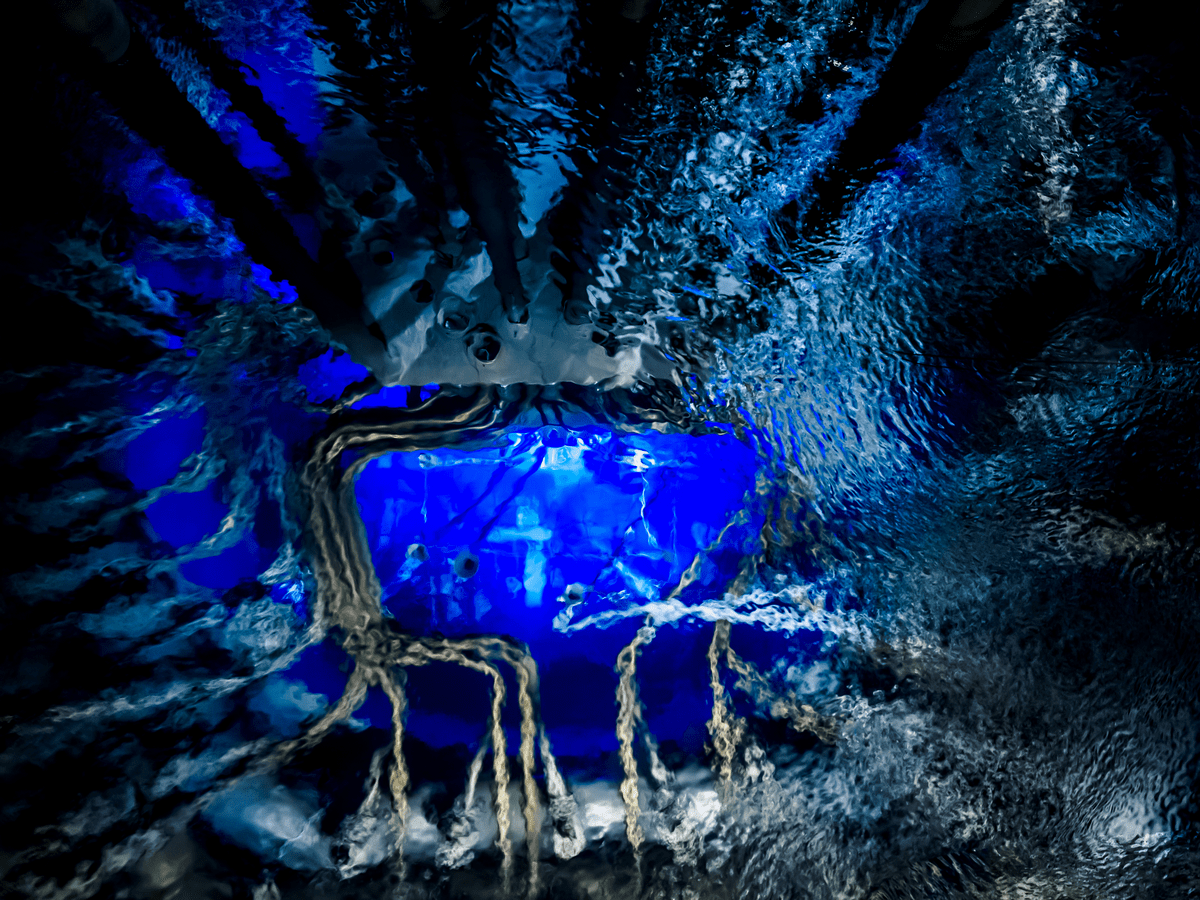The MARIA research reactor, Poland’s sole nuclear reactor, is of the channel-pool type and operates on uranium fuel enriched below 20% in 235U. The reactor utilizes water for moderation and a beryllium matrix that surrounds the fuel elements, with the core encased by a graphite reflector. With a capacity to reach a thermal power of 30 MW, MARIA's biological shield is comprised of water and heavy concrete, and features distinct cooling systems for the fuel channels and pool.
Within the reactor core are designated positions for target material irradiation. Additionally, MARIA is equipped with an apparatus for irradiation in the fast neutron spectrum, which serves purposes such as research into construction materials for fusion reactors, and has thermostatic probes that can withstand up to 1000°C internally.
Horizontal neutron beams emanate from the core to an experimental hall, facilitating material sample scanning, crystal structure analysis, excitation studies, and the mapping of impurity distributions. A dedicated beam, connected to the intra-core epithermal neutron converter, is earmarked for future radiobiological research and nuclear medicine applications.
In terms of radioisotope production, MARIA chiefly generates molybdenum-99, iodine-131, lutetium-177, phosphorus-32, samarium-153, cobalt-60, and holmium-166. These radioisotopes are the byproducts of nuclear transformations in target materials that are housed in specialized containers within the reactor core’s horizontal channels. Neutron bombardment instigates nuclear transformations, rendering most new nuclei unstable and resulting in decays that emit radiation useful for diagnostic and therapeutic applications. MARIA is one of the main global producers of molybdenum-99, a highly sought-after radioisotope in nuclear medicine, and meets about a third of the global demand for iodine-131, widely used for thyroid gland diagnosis and treatment. Moreover, MARIA is among the few facilities worldwide where microspheres containing holmium are irradiated to produce holmium-166 for palliative therapy in liver cancer treatment.





